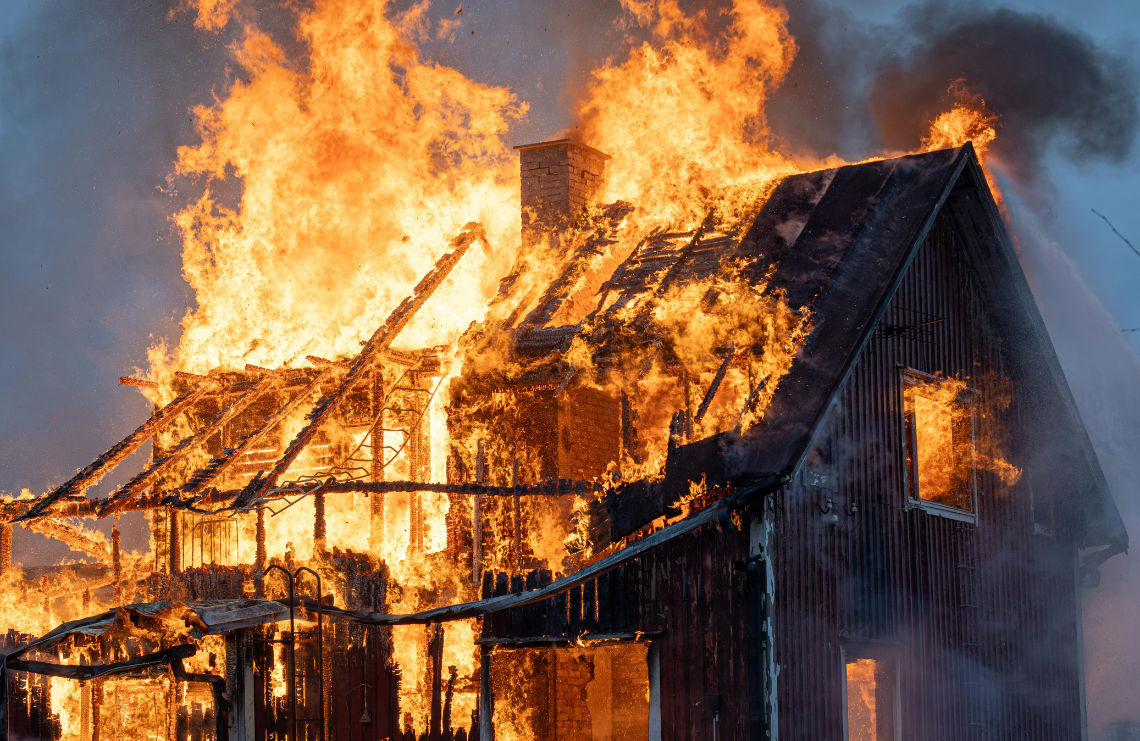As the research leader of Bushfire Adaptation at the CSIRO, Justin Leonard has a passion for helping
Australians to stay in their dream home for the long term. We chat to him about bushfire research and the “One House to Save Many” initiative
What led you to your current role at CSIRO?
A mix of interest and circumstances. I was heading towards a career in the automotive industry but as I graduated from university with a mechanical engineering degree, I was not particularly impressed by its level of innovation. I lucked upon a job ad in the university careers office for a CSIRO Fire Technician and got the position. It was a great opportunity to learn and be mentored by scientists who were leaders in building fire safety and bushfires. They effectively mentored me into the position of leading the bushfire work.
What interested you about the role?
I was looking for something that was both interesting and challenging. Bushfire research ticked the box for being a complex problem that was part social science, materials science, systems thinking and thermodynamics.
What exactly does your role entail?
In a nutshell, I study how bushfires interact with structures and how people perceive risk. I’ve been burning things at the Mogo Bushfire Burnover Facility in southern NSW for more than 18 years. My team and I use fire simulation to test a structure’s resilience. This includes how well it copes with heat, radiation and flames. Using heat sensors, we can track the levels at which different aspects fail.
My role involves setup and delivering a diverse range of projects for the community, industry and government. Each project is quite different and is like starting a new job each time. What is similar between each project is its focus towards becoming adapted to bushfire in the long term. This means that we are selective about who we work with and how we frame and solve that client’s needs.
What’s a burnover?
A burnover is when a fire moves through an area covering everything in its path. Burnover simulations can involve infrastructure such as buildings, cars, fire trucks, fences, power poles and water tanks.
Why do you think this kind of research is important?
Throughout Australia’s colonial history, bushfire has been quite disruptive to people’s lives and the economy. Climate forecasts do not paint a pretty picture of the future frequency and severity of disruptive bushfires, so adapting to this reality will ensure a less painful transition.
What are some recent interesting discoveries you have made?
That nature is always more interesting and complex than my imagination. 2019/20 taught us about a new type of fire season, where weather conditions do not moderate enough to allow fires to be suppressed in the landscape until the end of the fire season. This meant that fires would run whenever the winds picked up and were technically impossible to put out until the fire season ended. This realisation could help us find new ways to define how future climate can shape bushfire risk.
What are some of the main issues with Australian houses when it comes to fire resilience?
Australian houses are typically built with materials that burn. The materials may be external, inside the building cavities (like framing), or in the interior. People would find it fairly challenging to fitout their homes with non-combustible furniture, so it is up to the building itself to prevent embers, flame and radiant heat from reaching the interior. Typical Australian houses allow:
- Embers to reach the interior
- Ignition of external materials that burn through to the interior
- Ignition of the combustible building cavities such as roof, walls and sub-floors that burn through to the interior.
What was your role in One House to Save Many?
I was part of the design team for developing the design concept and bushfire prototype. I also set up the bushfire burnover experiment that helped to validate the design.
Why do you think this is an important initiative?
The concept of “best practice” design is very important. Many people do not realise that bushfire building regulations are “minimum standards” that may not necessarily meet their expectations. The One House initiative was important in being able to demonstrate that it is relatively easy to build a functional and aesthetic home to “best practice” for bushfire, flood and cyclone all at the same time! For this it has become an important driver of change.
What have you concluded from embarking on this research and how can it be applied to the building/architecture industry?
That effective and functional design solutions can draw on conventional building materials, skills and techniques. Also, there is an important role for helping builders and architects to better understand bushfire and using this knowledge to achieve best practice.
When do you think we will be able to start implementing these strategies in residential buildings
on a regular basis?
I see isolated examples of really effective designs and builds occurring now and for these to become more common or even mainstream, we need a major shift in community understanding and willingness to adapt to bushfire. By about 2050, the regularity and severity of bushfire for many parts of Australia will make it very obvious to those communities that they need to build to best practice.
What are some simple things that a homeowner, builder or architect can do to make their new build or renovation more fire resilient?
The build will be as strong as its weakest link, so attention to detail and materials used in all aspects of the house are important. Think beyond skin deep. The building cavities are just as important as the exterior materials. Think about design redundancy; assume that an external facade may be modified before a fire or damaged in a fire and allow flames or embers to pass into the building cavities.
Article featured in Grand Designs Australia Magazine issue 10.4

